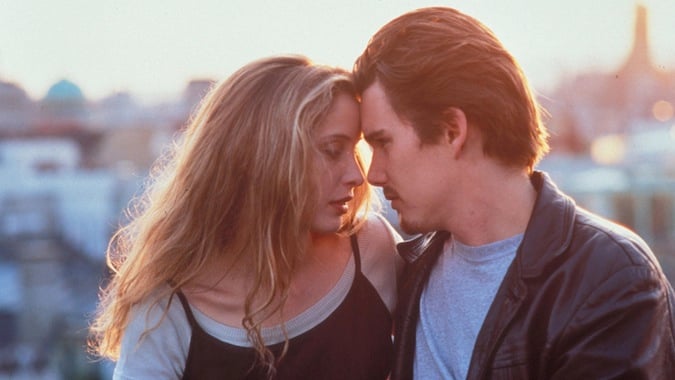Indeed I am still single. And I realized something …
If you take an introductory fiction writing class, there’s a good chance it will touch on three-act structure. For today’s purposes, here’s what you need to know: Things always get messy near the end of Act II.
This is true of every story, both in fiction and in life.
I recently became enamored with a man who lived in a different city. Actor (not his real name, but totally his real profession) and I shared the kind of hopeful late-night texts one can only exchange when they are connecting more to a concept than a person. One weekend, we planned to meet in the middle, in a city that was not our own. We had one epic, marathon date, with enough walking, talking and laughing to be worthy of a movie montage.
“It’s like Before Sunrise,” gushed one friend. “Or Before Sunset? Whatever, it’s romantic.”
Then, as swiftly as he burst onto the scene, he ghosted. Gone, without a trace.
There was a time when I would have found this devastating. I would have searched for clues and red flags and possible missteps. But at this point in my life, I realized — I was in the throes of a classic Act II. It helped me appreciate the experience for what it was: a short story instead of an epic. And so, I moved on.
In any narrative, Act I holds the shimmery promise of new adventure, while later, Act III boasts a thrilling climax and the exhale of conclusion. Act II, on the other hand, is kind of meh. In the middle of the journey, the hero mucks around for a while, feeling confused as to how it will all work out. The caterpillar is in the cocoon. Frodo is making his arduous trek. Harry and Sally are having so many conversations, but where, exactly, are they going?
Whether it lasts for a day or a decade, the second act slump has many names: a low point, a breakdown, rock bottom. You know it when you’re in it. I have come to think of all these, simply, as Act II. This little shift in terminology has changed everything. Because when you’re in Act II, you needn’t lose hope. It means the story isn’t over yet.
While some relationships are like comets, sailing swiftly to a fiery end, others take a more circuitous path. I once spent the majority of a seven-year relationship in one long, interminable Act II. We broke up, we reconciled. We moved in, we moved out. We drew swords, we retreated. Where was it ultimately headed? It was never quite clear.
Finally, there was a sort of breakthrough. It came in the form of a hasty marriage proposal that — spoiler alert — did not end in matrimony.
It took me a long time to process this. Now, I understand, we were trying to jump to Act III; trying to force a resolution that would tie a bow around all that had come before it. But just as you cannot jump multiple levels in MarioKart, you cannot jump from one act to another. You must first learn the lessons that will carry you there.
Act II is waiting for a decision. It’s anticipating that difficult conversation and actually having it. It’s feeling stuck outside of your comfort zone. It’s navigating the in-between.
It is also where most of the story takes place.
In this hypothetical fiction writing class, you would learn another important rule: Act II is always followed by Act III. Every story must have an end. Act III ushers in all the good stuff — the climax, the resolution. It doesn’t always mean happily ever after, mind you, but it does mean clarity. There is a sigh of relief.
That is how you find yourself back at the beginning. Maybe it’s a sequel, or maybe it’s a brand new path.
Act I, Scene I. Where will you go?
P.S. Relationship tips from a wedding reporter and a seven-step guide to heartbreak.
 PREVIOUS ARTICLE
PREVIOUS ARTICLE
